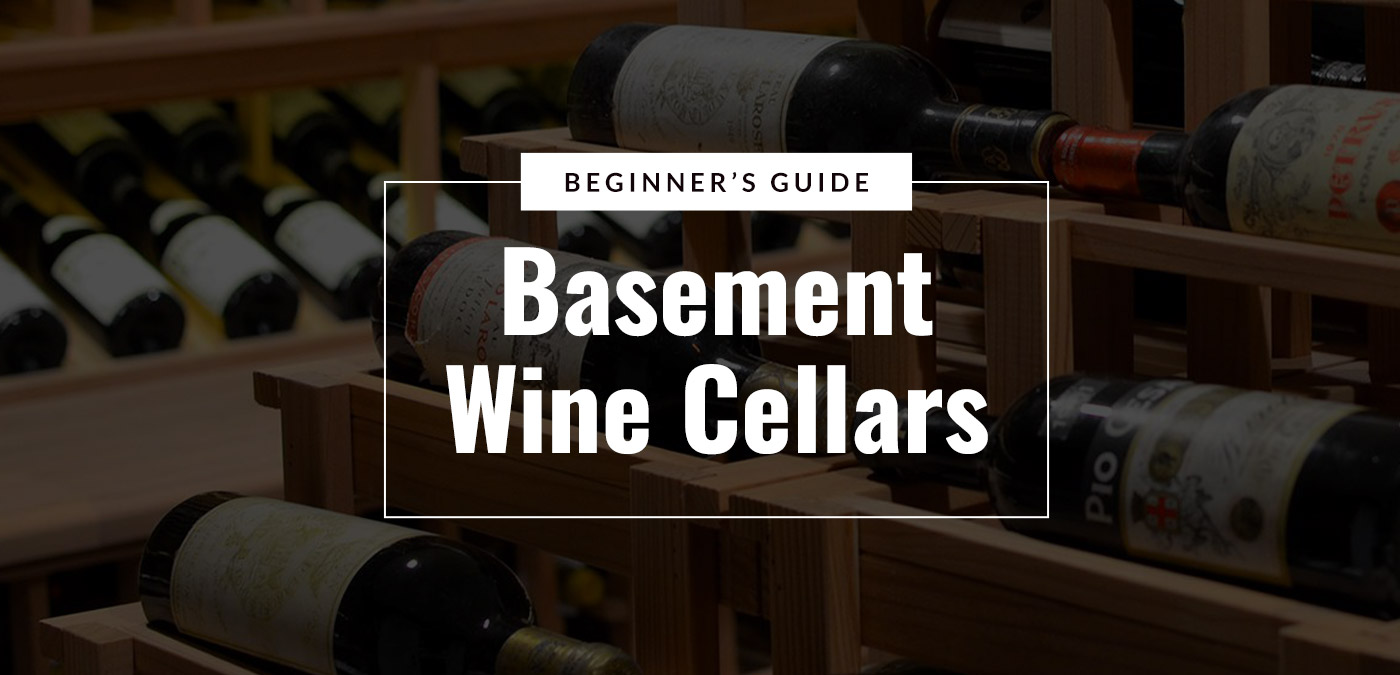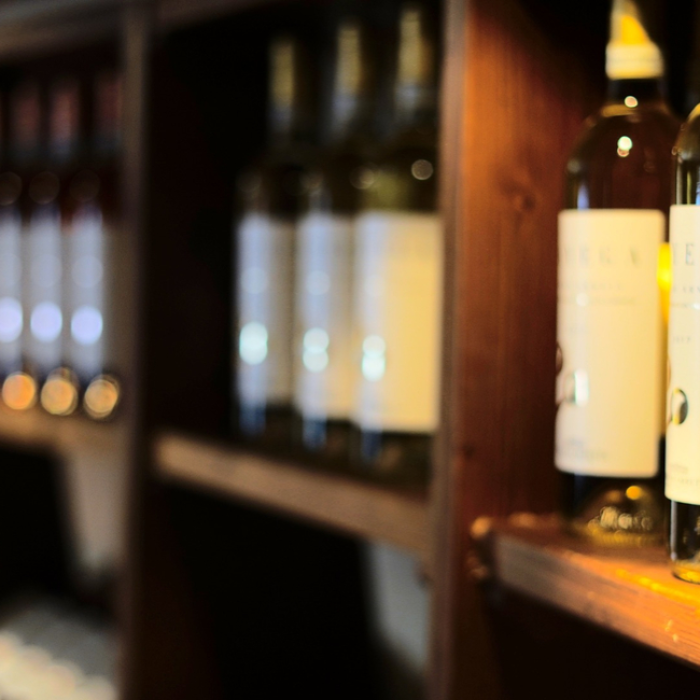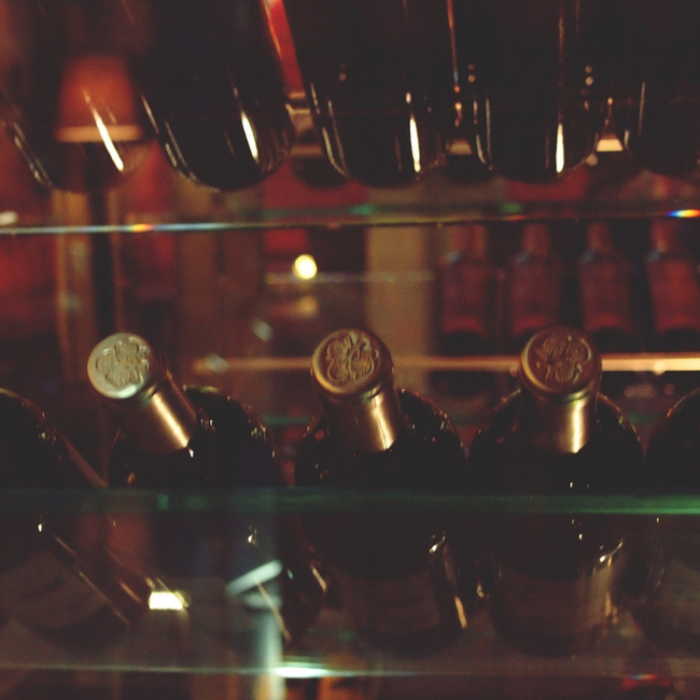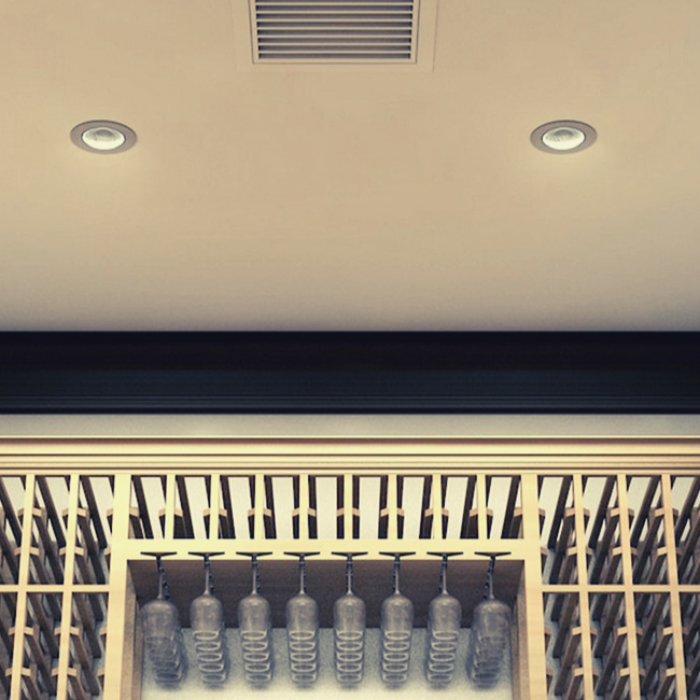Wine cellars and storage units are often high-tech, sophisticated machines. But that hasn’t always been the case—7,000 years ago, Neolithic peoples in Iran stored wine in pottery jugs, buried under dirt floors. A bit later, ancient Romans used catacombs to store their wine. Suffice to say, proper wine storage is an artform that humans have been perfecting for a long, long time.
Thankfully, we’ve come a long way since the Romans buried their wine in subterranean cemeteries. Today, tech-forward wine storage cellars are used to perfectly preserve fine wines all around the world, in both home and commercial settings.
For many, proper wine storage can feel like an intimidating subject, suitable for only the most expert-level sommeliers. But with the advent of modern wine cellars and storage solutions, storing and aging wine at home has become a relatively straightforward endeavor—provided you know the basics.
The Importance of Storing Wine Correctly
Wine is a rare substance in that it can actually improve in both flavor and value over time—but only if stored correctly. Here’s why:
Wine is perishable. Its relatively low ABV is not enough to keep wine palatable forever, unlike whiskey, rum, or other spirits. All wines will go bad eventually, but improper storage will significantly speed up that process. By improperly storing wines, you skip the ‘aging,’ and move directly into the ‘spoiling.’ (If you’ve ever left a bottle in your car on a hot summer day, you’ve likely experienced firsthand how quickly it can go rancid!)
Proper storage improves flavor and aroma. These sensory components of wine become more complex, nuanced, and intense with proper aging. But how? To answer that, we’ve got to put on our science hats. Wine tastes better with age because of a chemical reaction among sugars, acids, and substances which are known as ‘phenolic compounds.’ This chemical reaction can change the flavor, color, and mouthfeel of wine, especially in wines with high phenol levels like Syrah, Cabernet Sauvignon, and Nebbiolo.
In particular, we can point to one group of phenolic compounds: Tannins. Tannins are key in how a wine develops with age, and are generally found in the stems, seeds, and skins of grapes. Tannins are responsible for the dry components of a wine’s mouthfeel. These tannins respond to proper aging in a way that creates pleasant changes in certain wines.
Aged wine is an asset. Increasingly, aged wine is seen as an ideal way to diversify one’s investment portfolio. Similar to fine art, wine investing is based on a tangible asset which is expected to increase in value over time. Investors buy, store, and then resell their wine. For this to be feasible, the wine must be aged in virtually perfect conditions. After all, if your investment goes bad, well… it’s not much of an investment.
Properly storing wine over the course of years (or even decades) can vastly improve its character across the board, whether speaking of flavor or financial value.
Can You Store Wine in a Basement?
For many, a basement feels like a natural place to create a wine storage cellar. It’s cool, dark, and often left undisturbed. Their cavernous appeal and location off the main route of the home makes them an admittedly romantic spot to build a full-fledged wine cellar. Unfortunately, basements are not always the ideal place to store wine, for several reasons.
Temperature regulation is difficult. A constant, regulated ambient temperature is absolutely key to wine storage, as temperature is a main factor that plays into good wines going spoiled. Not only are many basements not air-conditioned; they are susceptible to the constantly changing temperature of the outside world. Even a 5-10 degree shift in ambient temperature can totally destroy the conditions for properly aging wine.
Most aren’t well-insulated. Similarly, many basements have very poor insulation. There is little to buffer from the effects of seasonal shifts in weather. Replacing basement insulation is, of course, possible—but it’s an expensive, time-consuming process that most likely still won’t produce a suitable environment for wine storage and aging.
Humidity creates havoc. Beyond temperature, basements are also prone to dramatic, unregulated fluctuations in humidity. Moisture is one of the top enemies of proper wine aging, as too much will lead to mold growth. If your basement is humid, the moisture in the air can ruin the label of a great bottle—even one that is kept at the ideal temperature. On the flip side, humidity levels that are too low can cause corks to dry out and shrink. When a cork dries and becomes brittle, air will leak into the bottle and the wine will begin to oxidize. When that happens, wine is sure to spoil.
Basements don’t smell great. Wine lovers know that smell plays a huge role in your ability and experience to taste. And all homeowners know that basements are prone to foul and musky odors—typically as a result of the excess moisture and humidity in the air. These odors can creep into your bottles and corrupt the wine’s delicate bouquet of aromas and flavors.
3 Requirements for Building a Wine Cellar in Your Basement
In some cases, it is possible to turn a basement into a fully-functioning, safe place to store and age wine! Let’s dive into how to do so.
- Finish your unfinished basement
By this point, you already know that you’ll need a few key conditions in place to store wine safely and effectively:
- A constant, ideal temperature range
- Proper humidity levels
- Odor-free environment
- Protection from harmful UV rays
To turn a basement into a wine cellar, the basement should be entirely finished. If yours isn’t, consider that step number one. Finishing your basement to be wine storage-ready includes:
- Fiber board or spray foam insulation
- Vapor barriers in the walls, ceiling, and/or floor
- Sealed floors
- A wine cellar cooling unit
- Electricity and safe access to outlets
This process may not be quick or easy, but the results will be oh-so worth it.
- Select and install a wine cellar cooling unit
After finishing a basement with electricity, insulation, and air conditioning, you may wonder why you even need a cellar cooling unit? One key reason is temperature control.
Here’s the thing: Two or three-degree swings may not feel like much to us. But over the course of a few years, those itty bitty fluctuations can do serious damage. A top rated wine cellar cooling unit is the best and only way to ensure your bottles are stored at the optimal temperature all the time.
By now, you may be wondering why the air conditioner in your finished basement doesn’t suffice. It’s true that an air conditioner can keep your wines at a constant ambient temperature. But air conditioners do so by manipulating the moisture content in the air. And if you’ll recall, constant humidity levels are another key part of proper wine storage. Plus, standard air conditioners can not cool down to the 55 degrees needed for proper wine storage.
For more information about different units, check out our related content:
- Why wine cooling units are so critical to storage
- The differences between air conditioners and wine cooling units
- Complete your basement cellar with wine racks
When outfitting your basement as a wine cellar, the finishing touch is the wine racks. These are available in a number of styles and finishes, made from a wide variety of materials. While personal preference does play a role here, you should be sure to find racks that are suited to long-term use. The racks should be made of materials that age well, because they will likely be in your cellar for years (and potentially decades). Avoid composite and particle board, and instead opt for more robust materials like metal and solid wood racks.
If you choose wood, be sure not to utilize a type of wood that is likely to bend, break, warp or shrink from moisture. While wine cooling units protect against moisture internally, basements are still prone to fluctuations in humidity. This can be very dangerous to your wines—the last thing you need is a bottle rolling out of its slot and shattering on the floor.
Can You Store Wine in a Basement?
Temperature regulation is difficult. A constant, regulated ambient temperature is absolutely key to wine storage, as temperature is a main factor that plays into good wines going spoiled.
Most aren’t well-insulated. Similarly, many basements have very poor insulation. There is little to buffer from the effects of seasonal shifts in weather.
Humidity creates havoc. Beyond temperature, basements are also prone to dramatic, unregulated fluctuations in humidity. Moisture is one of the top enemies of proper wine aging, as too much will lead to mold growth
What wine racks work best?
While personal preference does play a role here, you should be sure to find racks that are suited to long-term use. The racks should be made of materials that age well, because they will likely be in your cellar for years (and potentially decades). Avoid composite and particle board, and instead opt for more robust materials like metal and solid wood racks.
Seek our Staff for Support
At the end of the day, wine storage is a process. It takes time and education to learn how to properly age wine at home, and our Wine Storage Consultants know first-hand that that’s all a part of the fun! And once your cellar is built (whether out-of-the-box or a custom design), the results can be huge, whether your goals are collecting, investing or drinking.
At Wine Enthusiast, we offer a host of solutions for collections of any size. And while the choices are plenty, our team is available by online chat, email and phone to answer your questions and make recommendations. So take a look around—we’re sure there’s a wine cooling unit perfect for your budget and collection.






